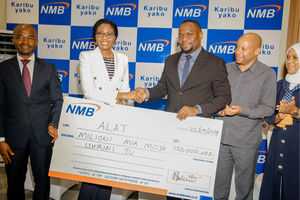MANAGING TAX RISKS: Proposed tax reforms in Budget

Shabu Maurus , www.auditaxservices.com
What you need to know:
- May be! The annual motor vehicle license fees have been abolished and an amnesty given to those with outstanding fees.
Last week the Minister for Finance presented the 2017/18 Budget which included several tax reform proposals. This article provides commentary on some of the proposed reforms.
Relief to motorists?
May be! The annual motor vehicle license fees have been abolished and an amnesty given to those with outstanding fees.
The fee will now be paid only once upon first registration of a motor vehicle in Tanzania at an additional Sh50,000. But, the abolition and amnesty come with a cost - an increase in excise duty on petrol, diesel and kerosene by Sh40 per litre.
The move will not only yield more tax revenue but also increase administrative efficiency. Taxes will be collected at fewer points – at first registration of motor vehicles and on importation of fuel. An increase in fuel pump price is likely to trigger price increases of other goods and services.
Reliefs from VAT
To reduce costs to some industries and subsectors, the Minister proposes four Value Added Tax (VAT) reforms. Exemptions of machinery imported by edible (vegetable) oil, textile, leather and pharmaceutical (including veterinary) industries; locally produced compounded animal feeds; fertilized eggs for incubation; and motor vehicles specifically designed for the disabled. Also, VAT zero-rating of ancillary transport services in relation to goods in transit.
VAT zero-rating may reduce cost but VAT exemption may not as it tends to introduce a ‘cascading effect’ into the VAT system.
Income tax relief to assemblers
The Minister proposes to reduce income tax rate for assemblers of vehicles, tractors and fishing boats from 30 percent to 10 percent for the first five years of operations. For most capital-intensive ventures, the first five years is likely to be a loss-making period and hence the said relief may not be realized. More time, say ten years, would have been more attractive.
Since the the AMT rules trigger by the third year, logically, the assemblers could be offered exemption from AMT. The decision to peg the tax incentives to a Performance Agreement is laudable.
Small-scale miners, not spared!
The Minister proposes a final withholding tax of 5 percent of market value of minerals (including gold, metallic minerals, colored gemstones, coal, and industrial minerals) on all small-scale miners. Whilst tax collection by way of withholding is an efficient approach the proposal begs further clarification. Who will withhold? Should individuals withhold tax? How will the ‘market value’ of the mineral be determined? In any case, it is good that steps are being taken to bring into the tax net operators in the informal sector.
AMT rules now clarified albeit partially
The Minister proposes to amend the income tax law to clarify that Alternative Minimum Tax (AMT) of 0.3 percent on turnover applies for entities with perpetual unrelieved loss for three rather than five consecutive years. The reform does not appear to seal all the other gaps around AMT rules.
Depreciation allowance
The income tax law caps deduction of annual depreciation allowance on motor vehicles considered “non-commercial”. The Minister proposes to increase the current Shs15 million outdated cap to Shs30 million. Despite the inflation, the cap has remained unchanged since 2004. Consideration could also be given to the use of Currency Point System introduced by the Tax Administration Act, 2015 rather than monetary values.
Mineral inspection fee
Amidst a hot public debate on the mining industry, exports of minerals will now be subject to a mandatory inspection and an inspection fee at 1% of the market value.
My next article will cover other reforms including those related to financial derivatives, re-insurance, charitable organizations, horticulture, property tax, advertisement fees, VAT returns and remission of interest.




